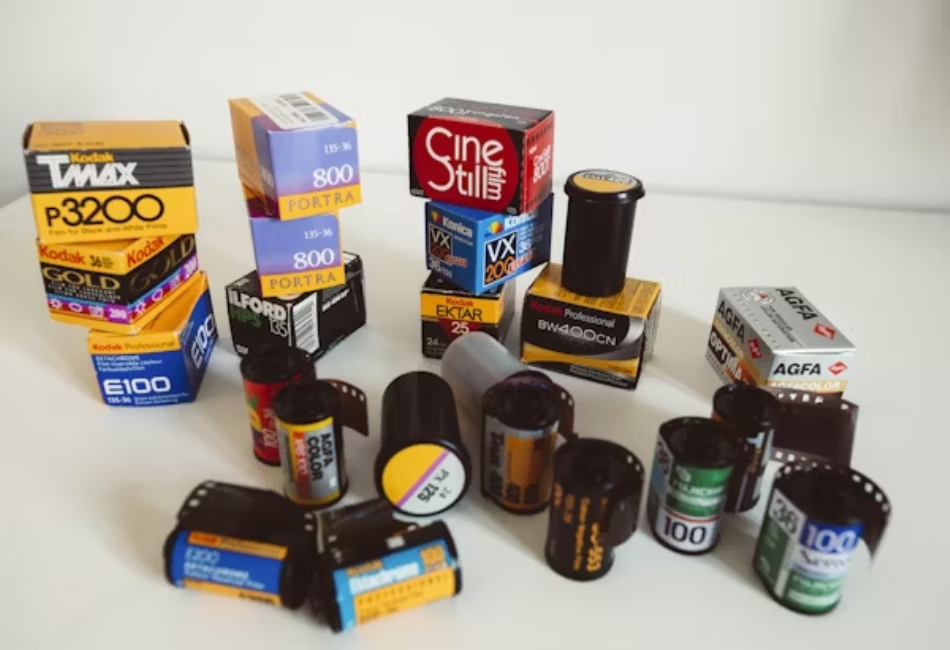In the current age of competition and innovation, an effective product packaging solution is an operational necessity for any manufacturer. The flexibility, speed, and product safety and shelf life advantages of roll stock film packaging are making it an ever-growing favorite among businesses spanning the food and beverage, pharmaceutical, cosmetics, and personal care industries. For firms that are looking for flexible packaging material solutions, this packaging style is highly customizable and economically favorable, allowing and appealing to businesses to keep up to high-volume production targets without compromising product quality, packaging aesthetics, or reliability.
In this guide, we’ll provide insights on the workings of roll stock film, the driving factors of its popularity, and the ways it can be used to maximize fresh and operational efficiency for B2B processes.
Investigating Roll Stock Film Packaging
Roll stock film packaging refers to flexible packaging materials that are used in form-fill-seal machines or other automated packaging machines. Unlike pre-made bags that are often time-consuming and unfriendly to production line automation, roll stock film enables businesses to create tailored size pouches as and when needed, eliminating excess bag space and allowing streamlined automation.
Key characteristics include:
- Material Flexibility: The required barrier properties could be achieved through making the films from PET, PE, BOPP, nylon, or their combinations.
- Customization Options: High-definition graphics, matte or glossy finishes, and even metallic accents are possible due to the printable surfaces.
- Barrier Protection: Moisture, oxygen, and light are blocked by advanced laminates therefore keeping products fresher for longer.
- Operational Efficiency: Downtime is reduced as there is continuous feeding into the packaging machines, thus speeding up production.
For those seeking an innovative flexible packaging material, roll stock film serves as a scalable and flexible solution for various product categories and production volumes.
The Freshness Factor: Safeguarding Product Integrity
Brand reputation and customer loyalty are heavily influenced by how businesses protect product freshness, which is why many companies opt for roll stock film packaging and flexible packaging methods. This is particularly true for the food, coffee, pet products, and pharmaceutical industries.
Key features to preserving product freshness:
- Moisture Block: Protects dry products like snack foods, powders, or coffee beans from humid conditions.
- Oxygen Block: Reduces the chances of spoilage, rancidity, or loss of flavor and potency due to oxidation.
- Light Protection: Specialized films mitigate ultraviolet rays that can damage color, nutrients, and flavor.
- Sealable Features: Heat-sealable materials can form airtight seals that keep the contents shielded until needed.
Selecting the appropriate flexible packaging material solutions allows businesses to safely transport products and deliver them to the intended end users while still retaining the quality and integrity of the products, even after prolonged transit or time spent on the shelves.
Efficiency in High Volume Production
For roll stock film, efficiency is an area of strength, especially for B2B applications. It enables greater packaging efficiency during high-volume production, and reduces storage space and procurement steps for the materials. Unlike rigid containers and pre-made pouches, this format offers increased units-per-hour packaging.
Benefits to production efficiency include:
- Continuous Operation: Unlike other models, roll stock packaging can be integrated with form-fill seal (FFS) systems, eliminating the need for packaging material reload breaks.
- Reduced Waste: Tailor-made pouches minimize excess material and cut down the number of packaging units disposed of.
- Compact Storage: Unlike pre-formed packaging, stored rolls take up less space which reduces storage costs.
- Faster Changeovers: Replaceable rolls can be interchanged more swiftly than reset FFS machines for different, pre-made-sized packaging.
For businesses that need to balance high production demands with thin margins, the efficiency of roll stock translates to direct cost savings and increased production.
Customization and Brand Storytelling
In today’s competitive landscape, packaging does much more than just contain a product; it serves as a subtle marketer. Companies can now change packaging into an unmatched marketing asset through advanced printing and finishing techniques using roll stock film.
Custom branding options include:
- Digital or Rotogravure Printing: Marketing graphics are created using retail shelf photo-realistic artistry and stand-out digitally or rotogravure printed.
- Special Finishes: Matte, gloss or soft-touch textures that are pleasing to the touch.
- Window Features: Transparent areas that maintain barrier protection while allowing consumers to view the product.
- Interactive Elements: Augmented reality triggers, scannable product info, or even QR codes.
Brands can dictate every inch of surface design as roll stock has complete control before pouch or wrap forming. This, alongside flexible packaging material solutions that include specialty or sustainable films, allows companies to achieve their marketing aims while upholding their corporate values.
Multi-Industry Applications
Used across an astonishing scope of sectors, roll stock film packaging is undoubtedly one of the most flexible formats in the packaging world.
Key sectors include:
- Food & Beverage: Granola, chips, coffee, and frozen foods benefit from freshness maintenance, while barrier films and custom printing enhances sales.
- Pet Food: Maintains brand appeal with strong laminates that endure rough treatment and heavy contents.
- Pharmaceuticals & Supplements: Moisture and oxygen highly barrier materials prevent degradation of active ingredients.
- Cosmetics & Personal Care: Designed for wipes, face masks, and single-use sample packages, lightweight films Durable, and stylish.
This versatility is crucial for rapidly evolving markets, as manufacturers can expand product lines without redefining their packaging systems.
Sustainability in Roll Stock Film Packaging
For both B2B buyers and their end customers, sustainability is top-of-mind. Packaging suppliers are adapting to the needs of their customers by offering eco-conscious flexible packaging material solutions that protect the environment without compromising performance.
Sustainable options include:
- Recyclable films: Monomaterial laminates with designed compatibility to recycling streams.
- Compostable materials: Film from plant sources that biodegrade in industrial compost facilities.
- Lightweight structures: Lower transportation emissions and carbon footprint.
- Recycled content films: New roll stock that incorporates post-consumer or post-industrial materials.
For brands that want to be perceived as responsible stewards of the environment, the use of sustainable roll stock film is a convenient option to showcase their commitment and is compliant with retailer and legal requirements.
Cost Benefits for B2B Businesses
Although the initial investment for high-quality roll stock film may differ, for businesses, the financial returns over time are significant.
Investment returns realized through:
- Reduced Material Expenses: Continuous film manufacturing tends to be more economical than a per unit price of pre-produced packaging film.
- Reduced Labor Expenses: Greater automation of FFS lines results in less manual intervention, lowering labor expenses.
- Reduced Shipping Expenses: Transport and storage of supply and storage of compact rolls are more economical than rigid containers.
- Reduced Expenses due to Longer Shelf Life: Effective shelf-life protection decreases spoilage and waste returns.
For businesses aiming to achieve a balance between high-quality product marketing and operational productivity, these benefits are offsetting the investment of roll stock.
Finding the Right Partner for Your Roll Stock Film
Not all suppliers are created equal. The right partner will not only supply high-quality films, but also has a deep insight to your industry’s requirements and that of your customers.
Key factors when choosing a supplier:
- Material Knowledge: Propose appropriate product barriers.
- Printing Expertise: History for high-quality, reliable marks.
- Compliance Validation: Materials conform to FDA and EU Region standards for food safety and other regional safety guidelines.
- Customer Support: Support dealing with machine interactions, seal parameters, and any other machine-related issues.
- Sustainability Credentials: Materials with verified ecological standards.
A close partnership with a supplier allows for seamless integration of roll stock film into your processes, fulfilling both operational and marketing requirements.
Upcoming Roll Stock Film Packaging Innovations
Anticipated advancements in roll stock films include the integration of smart packaging, automation compatibility, recyclability features, and other automation-friendly enhancements.
Key advancements anticipate:
- Smart Labels: Porous temperature and freshness indicators embedded in the film.
- Bio-based films: Renowned for the use of renewable resources, aimed at widespread acceptance in the packaging industry.
- Expanded digital printing: Economical for short-run printing, driving increased customization capabilities.
- Circular economy practices: Increased emphasis on packing supply chain systems with closed-loop recycling.
Brands will now have a greater value proposition for using roll stock as a competitive advantage for consumer demand as the developments will aid brands in exceeding consumer demands and regulatory standards.
Conclusion
Roll stock film packaging has been one of the game changers in the modern era of B2B manufacturing as it integrates freshness retention, productivity, and product branding all at once. It solves the need for flexible packaging material solutions which businesses need as it provides the required versatility to cater to multiple markets while being economical and less harmful to the environment.
Choosing the right materials, customization, and eco-friendly strategies boosts functionality and enhances brand image simultaneously. With time, roll stock film’s significance in the packaging industry will grow along with technology which will make it a wise and forward looking choice for manufacturers of all regions.



